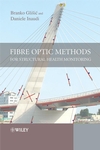
Using a complex array of more than 300 sensors, engineers say they can now remotely monitor the structural health of the new I-35W bridge in Minneapolis. The concrete bridge, which replaces the steel spans of the old bridge that collapsed and killed 13 people in 2007, incorporates sensors in the foundation elements, sub-structure columns, main span, box girders, expansion joints, bridge deck and bearings. The bridge's engineers, Figg Engineering Group, Inc., say they outfitted the new structure with the sensor system because they wanted to monitor its "health" and because they wanted to participate in advanced engineering research on the new structure with the University of Minnesota's Institute of Technology.
"It's unusual to do this on a new bridge, even today," says Alan Phipps, design manager for the I-35W project at Figg Engineering. "Structural health monitoring systems are typically applied to older structures." Figg outfitted the new bridge with at least six different types of sensors. In all, the company embedded 323 sensors, including: vibrating wire strain gauges in the concrete; temperature sensors on the top of the bridge deck and on the underside of the bridge; accelerometers to measure forces near the center of each box girder span; long-gauge strain gages in the main span; linear potentiometers to monitor movement of the expansion joints and bearings and embedded corrosion sensors to monitor corrosion to the reinforcing bars at various depths of the concrete.
"Minnesota uses a lot of salt, so the top 2.5 inches of the wearing surface is intended to be replaceable," Phipps says. "It's like the shingles on your house; eventually you have to put a new roof on.". Figg worked with sub-contractors to outfit the bridge with the sensors. Roctest Telemac provided wire strain gauges, temperature sensors and corrosion sensors. Accelerometers came from Minnesota Measurement Engineering.
Engineers can monitor the strains in the bridge in real-time over the Internet. All 323 of the sensors are connected by wire to a central computer, which collects data and stores it. The sensors made their debut recently when the Department of Transportation placed eight 25-ton trucks in various patterns atop the bridge deck and then monitored strains on the central computer. University of Minnesota engineering professors are said to be interested in examining the effect of temperature differentials between the top of the bridge – which can be exposed to sunlight – and the structure's underside, which is in the shade and faces down at the river below.
"This is just a way of starting off on the right foot with this new bridge," Phipps said. "It provides information on how to maintain the bridge, starting with Day One. We think this kind of structural health monitoring is going to become more and more common in the future."



